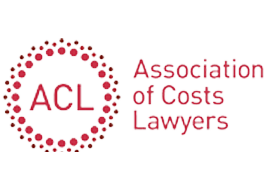Following a recent article posted by Litigation Futures regarding the increasing demand of clients wanting to share risk by way of damages-based agreements (DBAs) in light of the coronavirus pandemic, we discuss the circumstances in which the utilisation of DBAs is most appropriate and the key costs considerations.
Statutory Framework of a Damages-Based Agreement
From 1 April 2013 DBAs have been permitted for contentious work in England and Wales, meaning that lawyers can conduct litigation and arbitration in this jurisdiction in return for a share of any damages awarded (the contingency fee). The change was implemented by Section 45 of the Legal Aid, Sentencing and Punishment of Offenders Act 2012 (LASPO), which amended section 58AA of the Courts and Legal Services Act 1990 to permit DBAs.
In order to comply with Section 58AA, a DBA must be entered into on or after 1 April 2013, in writing and in accordance with the DBA Regulations 2013.
In order to be enforceable, the DBA Regulations 2013 require a DBA to specify the claim or proceedings to which it relates, the circumstances in which the lawyer’s fees are payable and the reasons for setting the level of the percentage.
The maximum percentage of damages that can be charged is 25% in personal injury and clinical negligence claims and 50% in all other cases (excluding employment cases). However, these limitations only relate to cases at first instance in accordance with section 4(4) of the DBA Regulations 2013 and so these limitations do not apply to any appeals. In employment cases the maximum percentage of damages that can be charged is 35%. A DBA that exceeds the maximum percentage that can be charged is likely to be deemed unenforceable.
Suitability of Damages-Based Agreements
The share of the damages award to be paid to the lawyer is normally a fixed percentage, which will usually reflect the risk taken by the lawyer, both in terms of the prospects of success and the lack of cash flow.
The attraction of DBAs to clients, particularly amid the coronavirus pandemic, is the certainty that they provide. Regardless of the outcome, clients know that they will not be liable for any more than the percentage of damages agreed with their lawyer. On the other hand, the lawyer will be aware that there is essentially a limit that can be recovered in payment of their fees. For this reason, in establishing the appropriate percentage of damages to be recovered from the client, the lawyer must have regard to the following factors:
-
The overall value of the claim;
-
The overall cost of taking the claim to trial;
-
The prospects of the claim settling successfully earlier than trial; and
-
The likely recoverable costs inter-partes.
An assessment of these factors should indicate whether there is a reasonable opportunity to pursue a legal dispute under a DBA. For example, if a case is modest in value, will cost a relatively large amount to progress to trial and is unlikely to settle beforehand, it would not be prudent or economical to pursue the case under a DBA. Even if the outcome is successful, the contingency fee is unlikely to cover the costs expended on an hourly rate basis. In contrast, a case with substantial damages, strong merits and the potential to settle at an early stage presents a far more attractive opportunity.
Key Costs Considerations
Careful consideration should be given to the likely recoverable costs on assessment when evaluating whether acting under a DBA is appropriate, particularly if there is a chance that significant reductions could be made.
Costs are recoverable on what is known as the ‘Ontario Model’. This means that if a claimant is successful, their recoverable costs will be assessed on the conventional hourly rate basis. If the contingency fee agreed between the lawyer and client is higher than the figure arrived at following the assessment of costs, the claimant will have to pay the shortfall out of the damages.
For example, where a claimant has agreed a contingency fee of 25% with their lawyer and is awarded damages of £2 million, the claimant owes their lawyer £500,000. If the costs recoverable from the defendant are assessed at £400,000, then the claimant has to pay their lawyer the excess £100,000 out of their damages.
However, by operation of the indemnity principle, if the costs are assessed at £600,000, the defendant is only liable for the contingency fee of £500,000.
Before committing to a DBA, it is imperative that an accurate estimate of the costs likely to be incurred taking the claim to trial is undertaken. There are various approaches that can be taken in this respect but one of the more effective methods is to consider the level of costs likely to be incurred up to each stage or ‘milestone’ of the proceedings. An accurate estimate of costs can ensure that the contingency fee agreed is profitable, but also attractive to the client.
The assessment of risk must also include the possibility that the damages or costs may be reduced by Court findings. For example, counterclaims, findings of contributory negligence, issues or percentage based costs orders and other forms of set off can have the effect of significantly reducing the damages or costs. The problem is that these findings can be difficult to foresee, particularly in the early stages of the proceedings. Therefore, it is important that any issues that may give rise to a set off in damages or costs are monitored during the currency of the claim.
Costs Issues Arising from the 2019 Proposals to Reform the DBA Regulations
In 2019, Professor Rachael Mulheron and costs counsel, Nicholas Bacon QC, were invited by the Ministry of Justice to conduct an independent review of the 2013 DBA Regulations in light of the government’s recognition that they would benefit from additional clarity and certainty. The proposed reforms included a number of important revisions to the Regulations, including some that impact upon the practice area of costs law.
As earlier mentioned, costs are currently recoverable under the ‘Ontario Model’. The 2019 draft regulations propose that this is replaced by a success fee model under which any recoverable costs are due to the lawyer in addition to the DBA payment, whilst irrecoverable costs remain included within the DBA payment and cannot be recovered from the client in addition. This could make DBAs more feasible in lower value cases and remove the potential for a “windfall” reduction in the opponent’s costs liability.
As a result of the proposed success fee model, which could increase the lawyer’s potential recovery, the proposals seek to reduce the maximum percentage of damages that can be recovered from the client from 50% to 40% in all cases other than personal injury.
The draft regulations propose that “hybrid” DBAs are permitted, enabling the lawyer to recover up to 30% of their costs from the client if the claim is unsuccessful. These costs would be calculated as a percentage of the costs incurred on an hourly rate basis that would have otherwise been chargeable in the absence of the DBA. This is an important aspect of the proposed reforms as the uncertainty arising from the drafting of the 2013 DBA Regulations as to whether hybrid DBAs are permitted is considered to be a significant factor in the unsatisfactory take-up of DBAs.
Finally, the draft regulations propose that there is flexibility for the lawyer and client to agree terms regarding payment of fees where the DBA is terminated. This is another particular issue that is considered to be unclear from the 2013 DBA Regulations.






